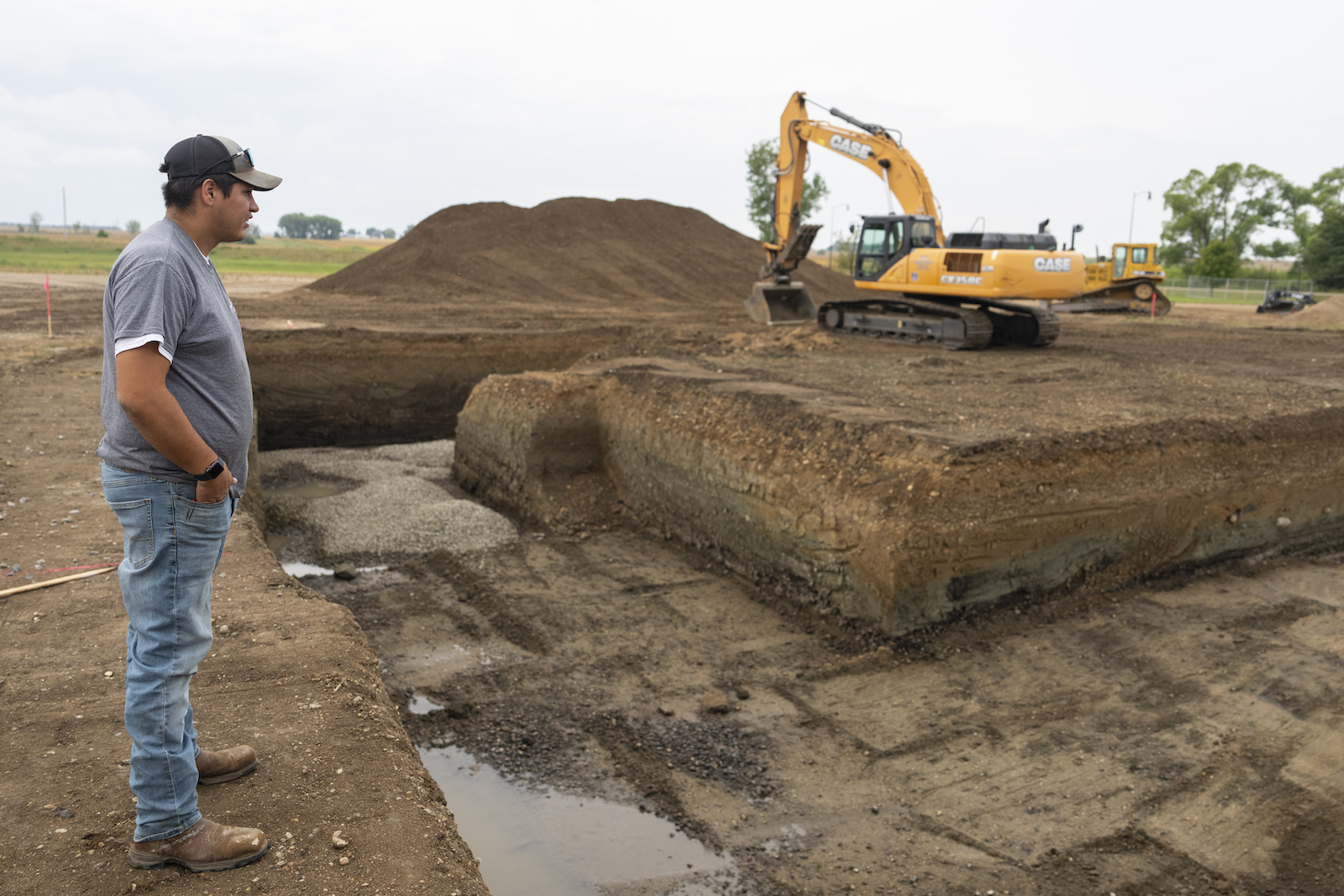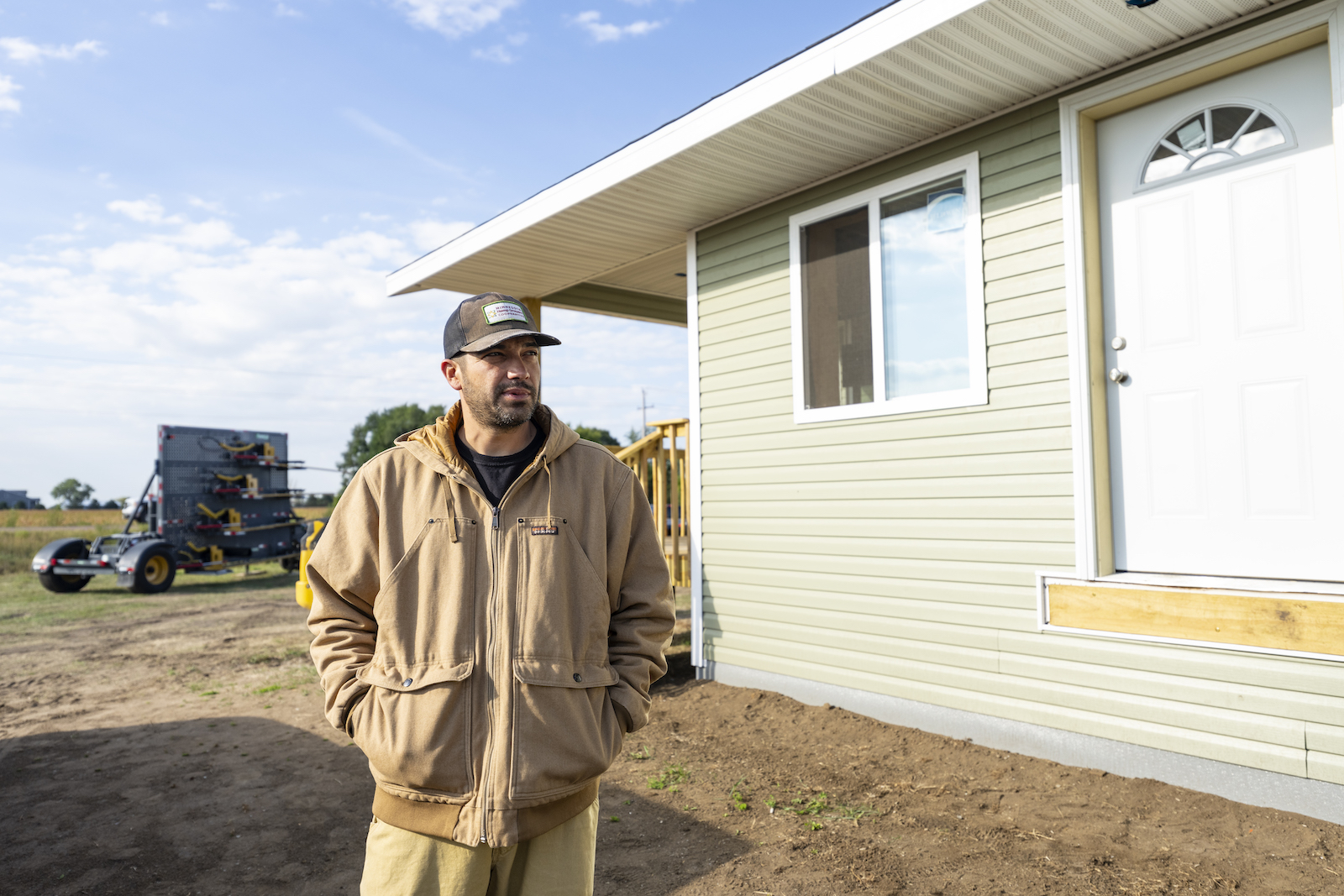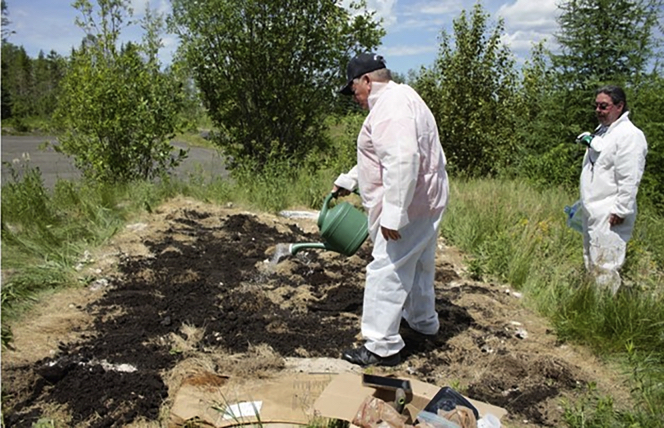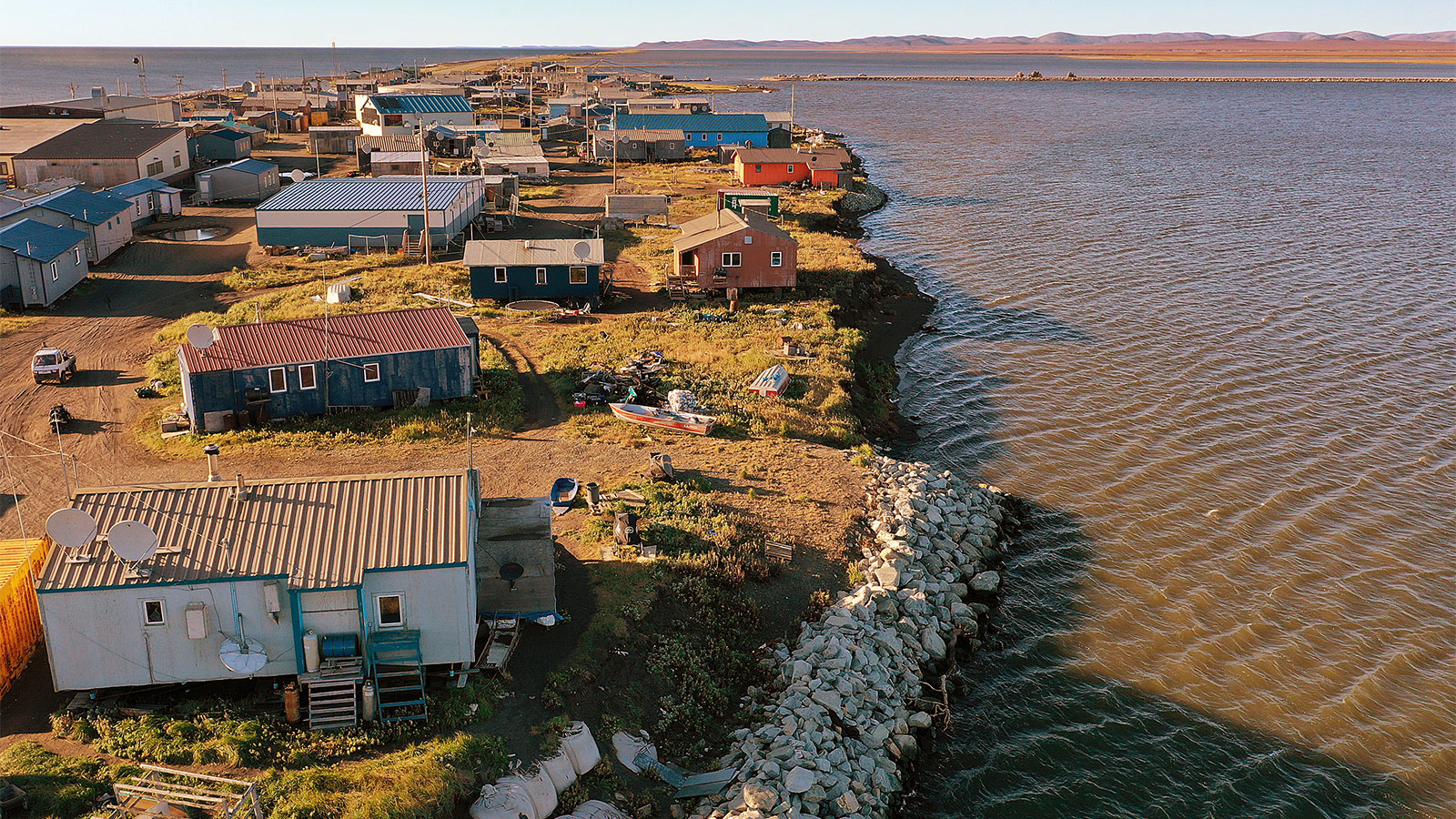
For now, it’s only a gaping hole in the ground, 100-by-100 feet, surrounded by farm machinery and bales of hemp on a sandy patch of earth in the Lower Sioux Indian Reservation in southwestern Minnesota.
But when construction is complete next April, the Lower Sioux — also known as part of the Mdewakanton Band of Dakota — will have a 20,000-square-foot manufacturing campus that will allow them to pioneer a green experiment, the first of its kind in the United States.
They will have an integrated vertical operation to grow hemp, process it into insulation called hempcrete, and then build healthy homes with it. Right now, no one in the U.S. does all three.
Once the tribe makes this low-carbon material, they can begin to address a severe shortage of housing and jobs. Recapturing a slice of sovereignty would be a win for the Lower Sioux, once a largely woodland people who were subjected to some of the worst brutality against the Indigenous nations in North America.
They lost most of their lands in the 19th century, and the territory finally allotted to them two hours south of Minneapolis consists of just 1,743 acres of poor soil. That stands in contrast to the fertile black earth of the surrounding white-owned farmlands.

Nearly half of the 1,124 enrolled members of the tribe need homes. Some of the unhoused camp on the hard ground outside the reservation, with nowhere else to turn. Those who do have shelter live in often moldy, modular homes with flimsy walls that can’t keep out the minus-15 Fahrenheit winter cold.
Now, they have two prototypes that are nearly done and know how to build or retrofit more. While learning how to make the houses, the construction team developed a niche eco-skill they can market off the reservation as well.
“The idea of making homes that would last and be healthy was a no-brainer,” said Robert “Deuce” Larsen, the tribal council president.
“We need to build capacity in the community and show that it can be an income stream.”
That one of the smallest tribes in the country, in terms of population and land in trust, is leading the national charge on an integrated hempcrete operation is no mean feat, seeing that virtually no one in the community had experience with either farming or construction before the five-man team was assembled earlier this year.
“It’s fantastic,” said Jody McGuinness, executive director of the U.S. Hemp Building Association. “I haven’t heard of any other fully integrated project like this domestically.”
Besides, hempcrete as a construction material is normally the domain of rich people with means to contract a green home, not marginalized communities. That’s because the sustainable material is normally imported from Europe rather than made locally.
“It’s accessible to people with wealth, who can afford to build a bespoke house. It’s not accessible to the general public,” McGuinness said.
The project is the brainchild of Earl Pendleton, 52, a rail-thin man of quiet intensity, who until recently was the tribal council’s vice president. He grew obsessed with industrial hemp when reading about it 13 years ago.

Aaron Nesheim / Grist
Pendleton was intrigued to learn that the bamboolike plant has 25,000 uses, including wood substitutes, biofuel, bioplastics, animal feed, and textiles.
Hemp can grow in a variety of climates and, depending on the location, can yield more than one harvest a year. What’s more, hemp regenerates soil, sequesters carbon, and doesn’t require fertilizers.
“It blew my mind,” he recalled.
People often confuse hemp with its cannabis cousin, marijuana. But hemp has negligible THC, or tetrahydrocannabinol, the psychoactive component that creates a weed high. And this stalky variant is more versatile than the flowery CBD (cannabidiol) type.
Hempcrete is made by mixing mashed stalks with lime and water. The oatmeal-like substance is stuffed or sprayed into the cavities of framed walls. Once it hardens, it resembles cement to the touch (thus the name) but has different properties.
The petrified substance has airtight qualities that can dramatically cut down on heating and air-conditioning needs. Unlike many commonly used building materials, it is nontoxic and resists mold, fire, and pests.
While used in Europe, commercial hemp was banned in the U.S. until the 2018 Farm Bill. Since then, hempcrete has been slow to catch on, due to a chicken-and-egg conundrum. Farmers don’t want to plant without facilities nearby to process the stalks. Potential processors don’t want to buy expensive machinery without guarantees of raw material. And most American contractors don’t know anything about hempcrete.
Aside from the green value, Pendleton saw a chance to pivot from the reservation’s Jackpot Junction Casino, the tribe’s main source of income for the past 35 years. A bronze statue of a warrior spearing a buffalo stands in front.
For many years, as Pendleton managed the floor and worked blackjack, he saw gamblers lose their paychecks, and more. The Lower Sioux weren’t getting richer. The population on the reservation has expanded rapidly since 2000, which meant the per capita cut that each family got from the $30 million yearly profits shrank. For most families, it is the only income they receive.
“We sell misery. It’s nothing to be proud of, the money to be made here,” Pendleton said.
He added that the guaranteed money from the casinos killed many people’s ambitions to get education or training for jobs, or to seek work off the reservation.
It took a while for him to convince the tribal leadership to endorse his hemp vision. “When I would bring it up eight years ago, they’d say, ‘What? You’re going to smoke the wall?’ They associated it with weed.”
He had some learning to do, too. Pendleton knew nothing about the industry, so he binged on YouTube videos about techniques and drove around the country to meet experts.
“It was daunting,” he said.
Once the tribal council got on board three years ago, they cobbled together loans, government grants, and their own funds to earmark more than $6 million to build the first two prototype homes and the processing campus.
They have the potential to plant hemp on 300 acres and, at a given time, grow on between 100 to 200 acres. Test seeds came from New Genetics in Colorado and the Dun Agro Hemp Group, a Dutch company with a new processing facility in Indiana that is seeking partnerships with tribal communities.
Pendleton recruited Joey Goodthunder, a cheerful 33-year-old who had picked up farming cattle and corn from his grandfather, as agricultural processing manager. Goodthunder set to planting in a field called Cansa’yap, or “the place where they paint the trees red,” which is what the tribe used to do to mark territory.

Pendleton lured as project manager Danny Desjarlais, 38, a tattooed carpenter who had been thinking about becoming a long-haul truck driver for lack of other work.
“Earl found out and took me and my kids’ mom out to eat and told her, ‘If he drives a truck, he’s not going to be home every night. I’ll have him home for dinner every night,’” Desjarlais said.
Desjarlais entertained doubts about this bizarre product he had never heard of. Pendleton sealed the deal by taking him to a hemp building conference in Austin, Texas. “That was eye-opening,” Desjarlais said.
Pendleton signed up three other Lower Sioux, only one of whom had experience putting up walls. And he invited two luminaries in hemp building: Jennifer Martin, a partner in HempStone, and Cameron McIntosh of Americhanvre to teach the different application techniques. They are based, respectively, in Northampton, Massachusetts, and Pennsylvania.
Intrigued by what this project could achieve in terms of Native sovereignty, Martin traveled to Minnesota again and again to usher the crew through the project.
“What the Lower Sioux is doing is the most compelling and forward-thinking thing that’s happening in hempcrete today,” she said. “No one else is doing anything like this. And Danny is one of the smartest people I’ve ever worked with; he’s like a sponge.”
The venture has, unsurprisingly, experienced bumps. Equipment housed at another company’s warehouse nearby broke down. Replacement parts were backlogged due to pandemic supply chain issues. Since they couldn’t process hemp in the time allotted to build, the crew had to import some.
Goodthunder, meanwhile, struggled with harvesting techniques alien to conventional agriculture, such as leaving cut stalks to rot in the field for weeks so that unwanted seeds separate from the woody inner fiber, called hurd.
Yet they’ve made progress.
They began with a demo shed in September 2022, placed on a field where the tribe holds powwows, an annual celebration of music and dance. The kids used it as a concession stand to sell sodas and candies. The remaining skeptics all wanted their pictures taken next to it.
“Once they saw it, they changed their minds,” Desjarlais said. “They said, ‘Let’s build a house.’”

Aaron Nesheim / Grist
Build they did. In a 14-day blitz in July, the team threw together a 1,500-square-foot lime-green ranch, without any blueprints. It’ll be used as two units of temporary housing for people coming from substance abuse treatment or jail.
“Everyone said, ‘It‘s impossible.’ Even people in the hemp world thought it was impossible,” Desjarlais said proudly. His muscled arm, tattooed with the words “Love Life,” pointed at the hempcrete blocks wedged securely into the 12-inch-thick walls. A pleasant, haylike smell wafted through the house.
Another four-room prototype is already framed and being filled with hempcrete. It will be rented out to community members when done.
The processing campus where they hope to manufacture blocks or panels of hempcrete has a solar greenhouse to store bags of lime and hemp, as well as equipment such as a combine harvester and a decorticator that separates the hurd from the softer fibers that can be used for textiles.
The project could serve as an example for the 573 other federally recognized tribes, many of which face similar critical shortages of jobs and housing. Native Americans retain 25 percent of U.S. land tenure in federal trust, and self-governing communities don’t have to wait for permits from other authorities.
Larsen, the tribal president, thinks hemp could provide a lucrative income stream for tribes that have the land to grow it and a trained crew that can offer its skills off the reservation.
“Native American tribes have an advantage, because they can build with materials that are new, without having to get them certified by a national agency,” said McGuinness. “They don’t have the bureaucracy holding them down.”
What’s more, he’s hearing about non-tribal companies, Dun Agro among them, that are viewing tribal communities as development partners.
Architect Bob Escher, who has four residential designs in the works involving hemp, sees demand for skilled hemp professionals increasing as green building takes off. So far, there are only a handful of these experts in the U.S.
“Who knew five years ago that a hempcrete consultant would be sitting at the same table with structural engineers, electrical contractors, HVAC installers, and interior designers to help me and the client develop the design program,” he said. “This is the pure definition of job creation.”
For now, the Lower Sioux undertaking has caught the eye of four other reservations in Minnesota, as well as Dallas Goldtooth, who plays the Spirit in the hit show Reservation Dogs on Hulu. Desjarlais said the actor was interested in a hempcrete build for his mother, who lives in the community.
Farther north, the Gitxsan First Nation in Canada invited Desjarlais to show them in August how to build. They’ve grown enough hemp for three prototype homes on their Sik-E-Dakh reserve 16 hours north of Vancouver and are seeking $5.5 million (Canadian) to get a similar integrated project off the ground.
Desjarlais left them inspired, said Velma Sutherland, a band administrator. “This could be the start of something big.”
This story was originally published by Grist with the headline The Lower Sioux in Minnesota need homes — so they are building them from hemp on Nov 27, 2023.









